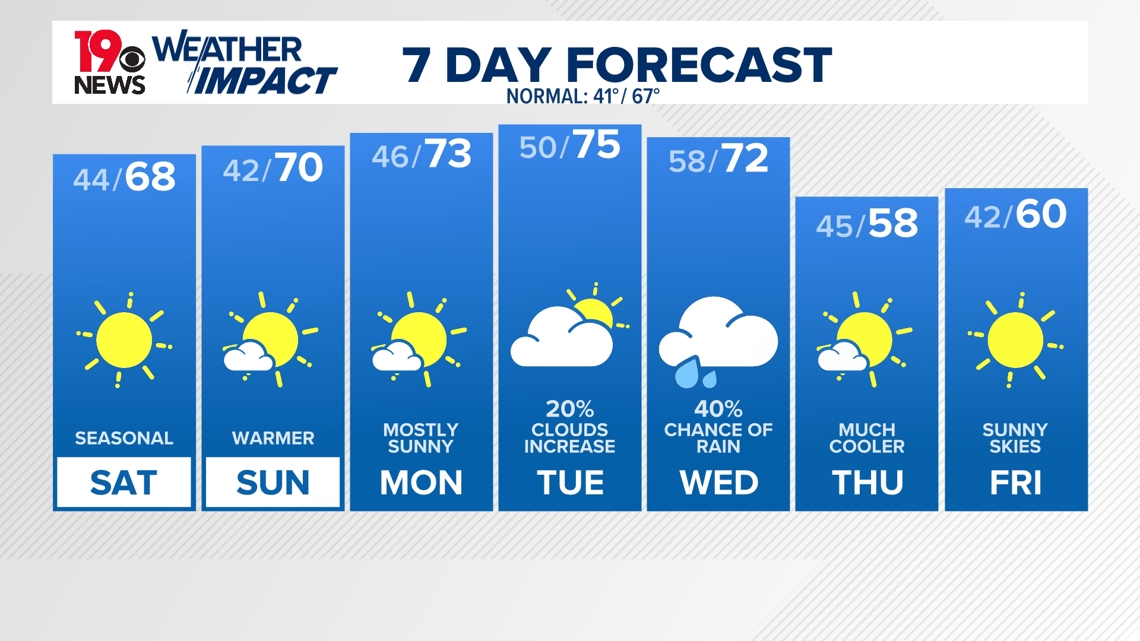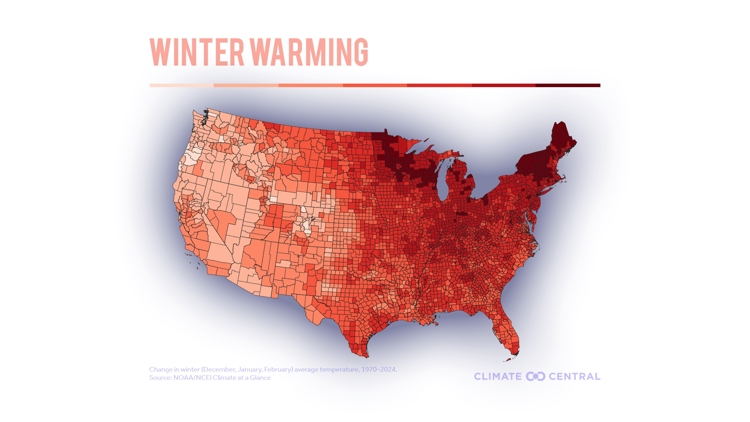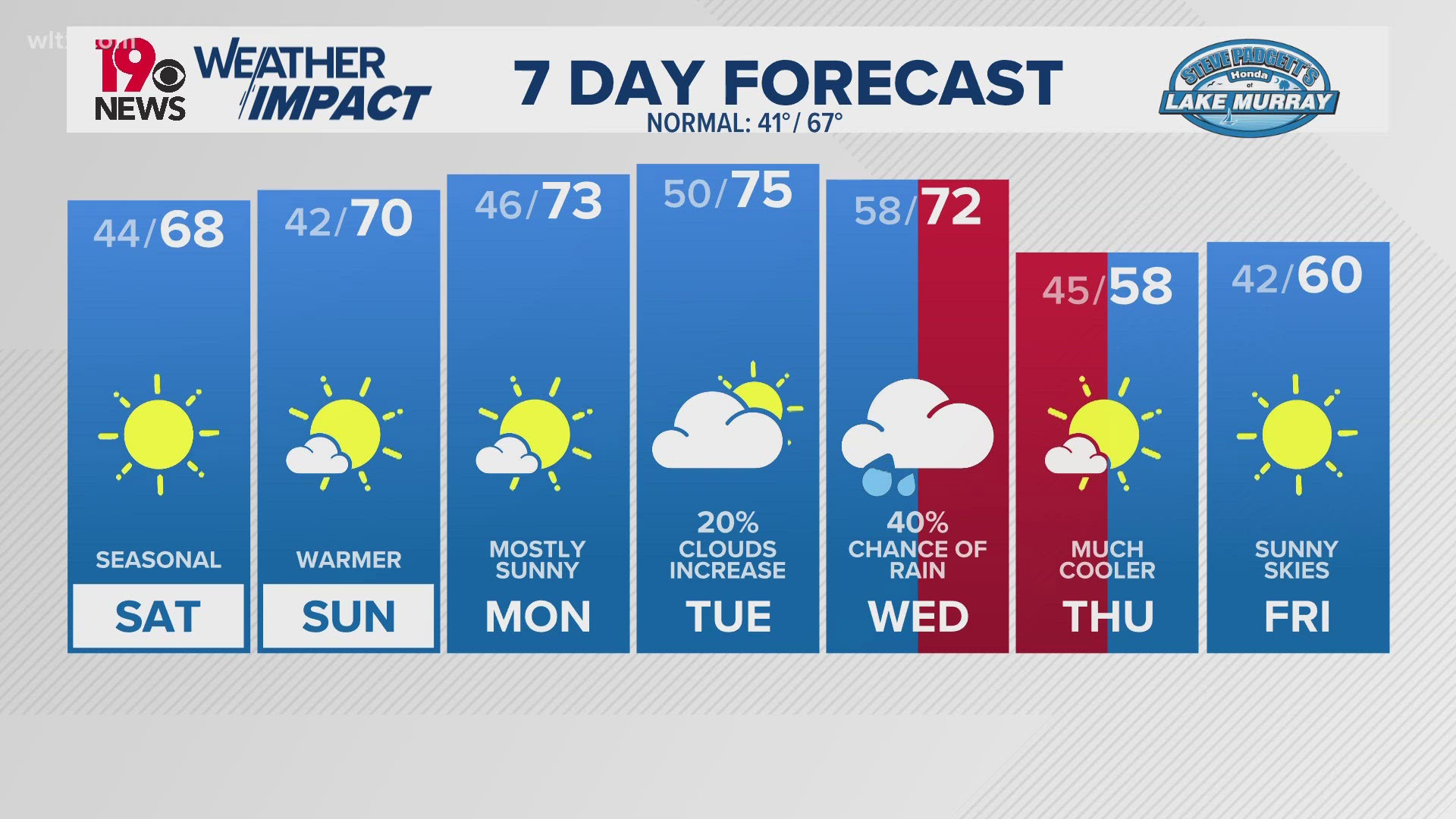COLUMBIA, S.C. — The start of the meteorological winter season is just around the corner. It begins on December 1st and ends at the end of February. This comes after a warmer than average fall season.
Climatological data from Climate Central is shows that winters have warmed across much of the United States from 1970 to 2024. On average, the season has warmed by about 4 degrees Fahrenheit. According to Climate Central, the areas that have seen the most warming on average are locations across the Upper Midwest, Northeast, and Ohio Valley. However, South Carolina has also seen warmer winters on average.
Data shows that warm winter days are now happening more often with temperatures climbing above the normal averages. Also, the coldest days aren't as cold, and cold snaps are shrinking.

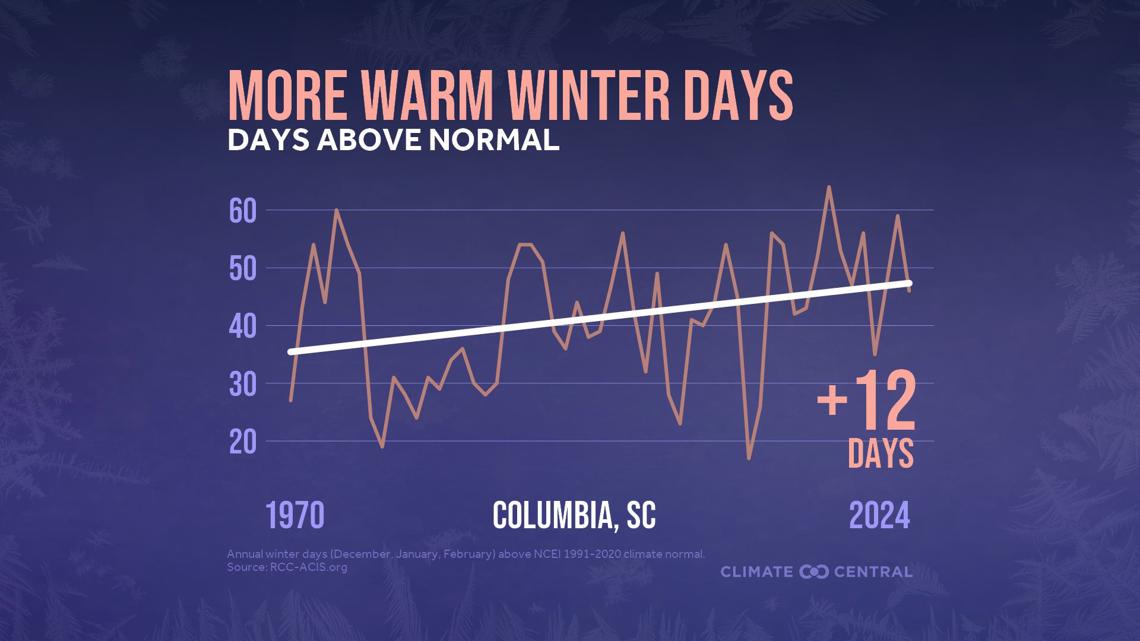
According to Climate Central, here in the Columbia area we have seen on average an increase in the amount of days with above normal temperatures by 12 days. In 1970 the average number of days with above normal temperatures was around 36 days for the entire season. Now, the average number of days with above normal temperatures is around 48 days.
With this increase in warmer days, the average temperature for the entire meteorological winter season can increase. Data from Climate Central shows that average winter temperatures in the Columbia area have increased by about 3.8 degrees. There are still freezing nights, but there are less of them. Cold streaks are also becoming shorter.

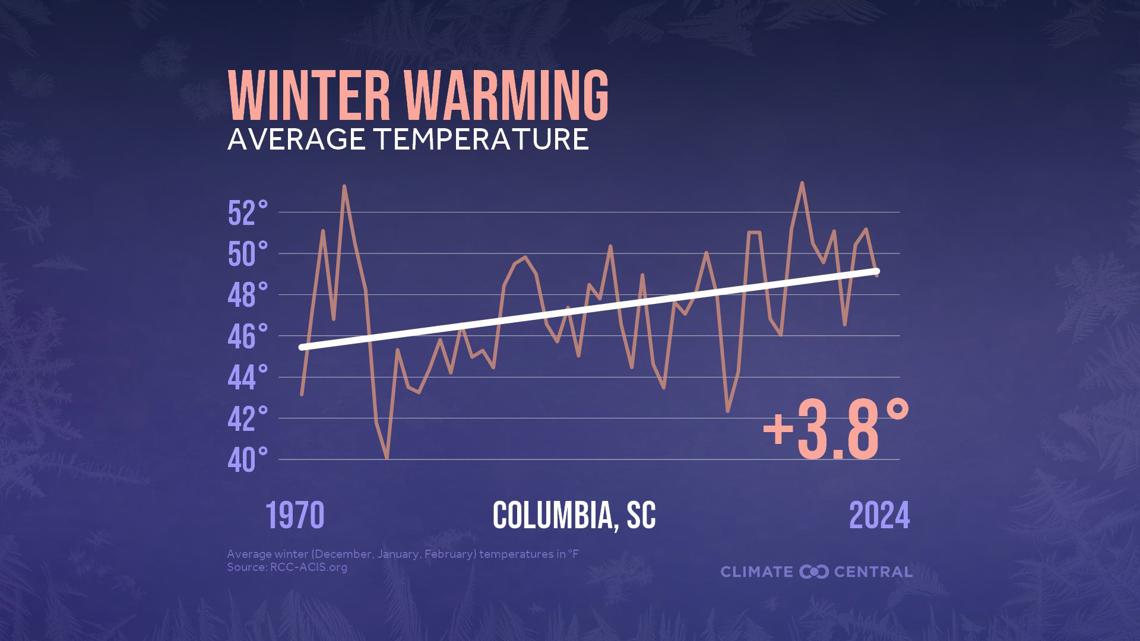
The warmer fall season we have seen this year is indicative of another warmer than normal winter ahead. The Columbia area is overdue for the first freeze of the season. The normal date range for the first freeze is November 1 - November 15. Over the next 7 days, there aren't any signs of a potential freeze.

